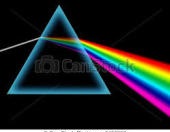10.6:Random walk and quantum decoherence
Let the state space
$\Omega$ be
${\mathbb Z}=\{0,\pm1,\pm2,\ldots\}$
with the counting measure $\nu$.
Define the dual {{causal operator}} ${\Phi}^*: {\cal M}_{+1}({\mathbb Z}) \to {\cal M}_{+1}({\mathbb Z})$
such that
where $\delta_{(\cdot )}
(\in
{\cal M}_{+1}({\mathbb Z})
)$ is a point measure.
Therefore,
the
causal operator $\Phi: L^\infty ({\mathbb Z}) \to L^\infty ({\mathbb Z})$
is defined by
and the pre-dual causal operator
$\Phi_*: L^1 ({\mathbb Z}) \to L^1 ({\mathbb Z})$
is defined by
Now,
consider the discrete time
$T=\{0,1,2,\ldots,N\}$,
where the parent map
$\pi: T \setminus \{0\} \to T$ is defined by
$\pi ( t ) = t-1$
$(t =1,2,...)$.
For each
$t (\in T )$,
a state space $\Omega_t$
is define by
$\Omega_t= {\mathbb Z}$.
Then,
we have
the
{{sequential causal operator}}
$\{ \Phi_{\pi(t), t }(=\Phi ){}: $
${L^\infty (\Omega_t)} \to {L^\infty (\Omega_{\pi(t)})} \}_{ t \in T\setminus \{0\} }$
 10.6.1: Diffusion process
10.6.1: Diffusion process
Example 10.15 [Random walk]

Consider the quantum basic structure: \begin{align} [{\mathcal C}(H) \subseteq B(H) \subseteq {B(H)}] \end{align}
Let ${\mathbb P}=\{P_n \}_{n=1}^\infty$ be the spectrum decomposition in $B(H)$, that is,
\begin{align} P_n \mbox{ is a projection (i.e., $P_n=(P_n)^2$ ), and}, \sum_{n=1}^\infty P_n =I \end{align}Define the operator $(\Psi_{\mathbb P})_*: {\mathcal Tr}(H) \to {\mathcal Tr}(H)$ such that
\begin{align} (\Psi_{\mathbb P})_* (|u \rangle \langle u |) = \sum_{n=1}^\infty |P_n u \rangle \langle P_n u | \quad (\forall u \in H) \end{align}Clearly we see
\begin{align} \langle v, (\Psi_{\mathbb P})_* (|u \rangle \langle u |) v \rangle = \langle v, (\sum_{n=1}^\infty |P_n u \rangle \langle P_n u |) v \rangle =\sum_{n=1}^\infty |\langle v, |P_n u \rangle |^2 \ge 0 \qquad (\forall u,v \in H ) \end{align}and,
\begin{align} & \mbox{Tr}((\Psi_{\mathbb P})_* (|u \rangle \langle u |)) \\ = & \mbox{Tr} (\sum_{n=1}^\infty |P_n u \rangle \langle P_n u |) = \sum_{n=1}^\infty \sum_{k=1}^\infty |\langle e_k , P_n u \rangle|^2 = \sum_{n=1}^\infty \| P_n u \|^2 = \|u\|^2 \qquad (\forall u \in H ) \end{align}
where $\{ e_k \}_{k=1}^\infty$ is CONS in $H$.
And so,
Therefore,
$\Psi_{\mathbb P} (=((\Psi_{\mathbb P})_*)^*):
B(H) \to B(H)$
is a causal operator,
but
it is not
deterministic.
In this note,
a non-deterministic (sequential) causal operator
is called a
quantum decoherence.
Remark 10.16 [Quantum decoherence]
For the relation between quantum decoherence and quantum Zeno effect, see $\S$11.3. Also, for the relation between quantum decoherence and Schrödinger's cat, see $\S$11.4.
In tis note, we assume that the don-deterministic causal operator belongs to the mixed measurement theory. Thus, we consider that quantum language (= measurement theory ) is classified as follows.
| $(A):$ | $ \underset{(=\mbox{ quantum language})}{\mbox{ measurement theory}} \left\{\begin{array}{ll} \underset{\mbox{(A$_1$)}}{ \mbox{pure type}} \left\{\begin{array}{ll} \!\! \mbox{classical system} : \mbox{ Fisher statistics} \\ \!\! \mbox{ quantum system} : \mbox{ usual quantum mechanics } \\ \end{array}\right. \\ \\ \underset{\mbox{(A$_2$)}} {\mbox{mixed type}} \left\{\begin{array}{ll} \!\! \mbox{ classical system} : \mbox{ including Bayesian statistics,} \\ \qquad \qquad \qquad \mbox{ Kalman filter} \\ \!\! \mbox{ quantum system} : \mbox{ quantum decoherence } \\ \end{array}\right. \end{array}\right. $ |
